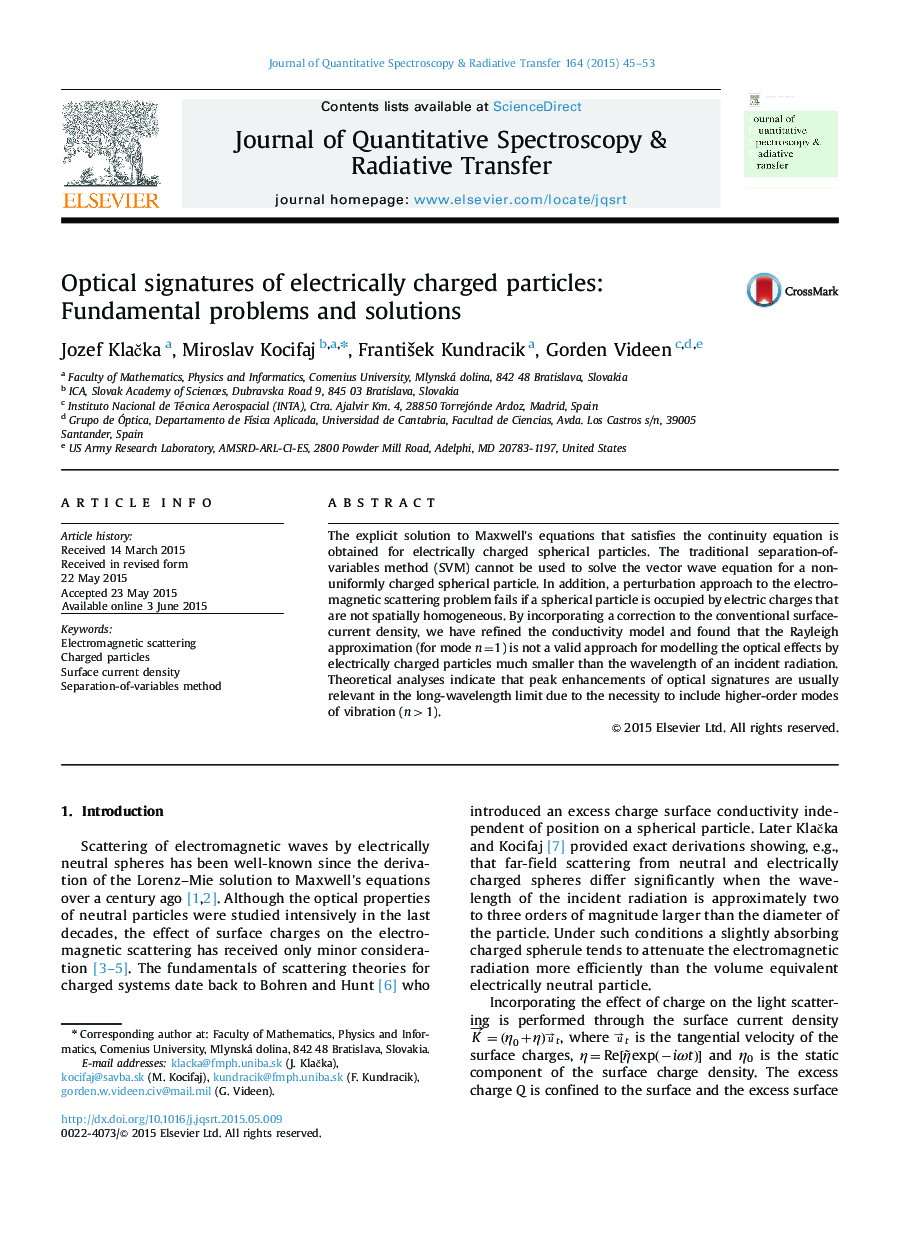| Article ID | Journal | Published Year | Pages | File Type |
|---|---|---|---|---|
| 5427979 | Journal of Quantitative Spectroscopy and Radiative Transfer | 2015 | 9 Pages |
â¢SVM is inapplicable to solve EM scattering by non-uniformly charged sphere.â¢SVM fails to satisfy the 2D continuity equation for such particles.â¢First (Rayleigh) mode is insufficient to model resonances in small charged spheres.â¢A conventional surface-current density concept is improved.â¢Numerical demonstrations are made for amorphous quartz and particles of Al2O3.
The explicit solution to Maxwell׳s equations that satisfies the continuity equation is obtained for electrically charged spherical particles. The traditional separation-of-variables method (SVM) cannot be used to solve the vector wave equation for a non-uniformly charged spherical particle. In addition, a perturbation approach to the electromagnetic scattering problem fails if a spherical particle is occupied by electric charges that are not spatially homogeneous. By incorporating a correction to the conventional surface-current density, we have refined the conductivity model and found that the Rayleigh approximation (for mode n=1) is not a valid approach for modelling the optical effects by electrically charged particles much smaller than the wavelength of an incident radiation. Theoretical analyses indicate that peak enhancements of optical signatures are usually relevant in the long-wavelength limit due to the necessity to include higher-order modes of vibration (n>1).
